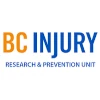BC Injury Research & Prevention Unit
- Read more about BC Injury Research & Prevention Unit
- Log in to post comments
 The goal of the BC Injury Research & Prevention Unit (BCIRPU) is to reduce the social and economic burden of injury in BC. The Unit is part of the BC Children’s Hospital Research Institute and supports the development of policies and programs through research, surveillance, and the translation of evidence and knowledge for researchers, policy makers, practitioners, and the public.
The goal of the BC Injury Research & Prevention Unit (BCIRPU) is to reduce the social and economic burden of injury in BC. The Unit is part of the BC Children’s Hospital Research Institute and supports the development of policies and programs through research, surveillance, and the translation of evidence and knowledge for researchers, policy makers, practitioners, and the public.

 A new Road Safety Monitor (RSM) poll by the Traffic Injury Research Foundation (TIRF) shows that a majority of young Canadian drivers are aware that they cannot drive safely after drinking alcohol. The public opinion poll conducted in September 2010 investigated a variety of drinking and driving behaviours and attitudes among youth including riding with a drinking driver.
A new Road Safety Monitor (RSM) poll by the Traffic Injury Research Foundation (TIRF) shows that a majority of young Canadian drivers are aware that they cannot drive safely after drinking alcohol. The public opinion poll conducted in September 2010 investigated a variety of drinking and driving behaviours and attitudes among youth including riding with a drinking driver. This study released by the
This study released by the  Human error is responsible for between 75% and 90% of crashes, but this report from Australia suggests that the system that a driver makes the error within needs to be more carefully examined. The system either contributes to the error or shapes the driver's behaviour that produces the error.
Human error is responsible for between 75% and 90% of crashes, but this report from Australia suggests that the system that a driver makes the error within needs to be more carefully examined. The system either contributes to the error or shapes the driver's behaviour that produces the error. Commercial Truck and Bus Safety Synthesis Program (CTBSSP) Synthesis 18: Older Commercial Drivers: Do They Pose a Safety Risk? explores age-related changes in the basic functional abilities needed to drive safely. The report is designed to help assist industry and labor practitioners in promoting safer commercial operations.
Commercial Truck and Bus Safety Synthesis Program (CTBSSP) Synthesis 18: Older Commercial Drivers: Do They Pose a Safety Risk? explores age-related changes in the basic functional abilities needed to drive safely. The report is designed to help assist industry and labor practitioners in promoting safer commercial operations. This report produced by the US Transportation Research Board's National Cooperative Highway Research Program (NCHRP) explores human factors principles and findings for consideration by highway designers and traffic engineers. The report is designed to help the non-expert in human factors to consider more effectively the roadway user’s capabilities and limitations in the design and operation of highway facilities.
This report produced by the US Transportation Research Board's National Cooperative Highway Research Program (NCHRP) explores human factors principles and findings for consideration by highway designers and traffic engineers. The report is designed to help the non-expert in human factors to consider more effectively the roadway user’s capabilities and limitations in the design and operation of highway facilities. Lloyd's TSB Insurance commissioned a study that suggests driving with a cold or the flu can impair a driver by up to 11%, comparable to having consumed a double of hard liquor. A single sneeze lasts about 2 seconds, during which the driver's eyes are closed. At a speed of 80 km/h this will mean a travel distance of almost 45 meters.
Lloyd's TSB Insurance commissioned a study that suggests driving with a cold or the flu can impair a driver by up to 11%, comparable to having consumed a double of hard liquor. A single sneeze lasts about 2 seconds, during which the driver's eyes are closed. At a speed of 80 km/h this will mean a travel distance of almost 45 meters.